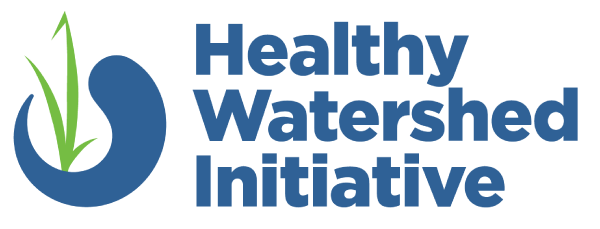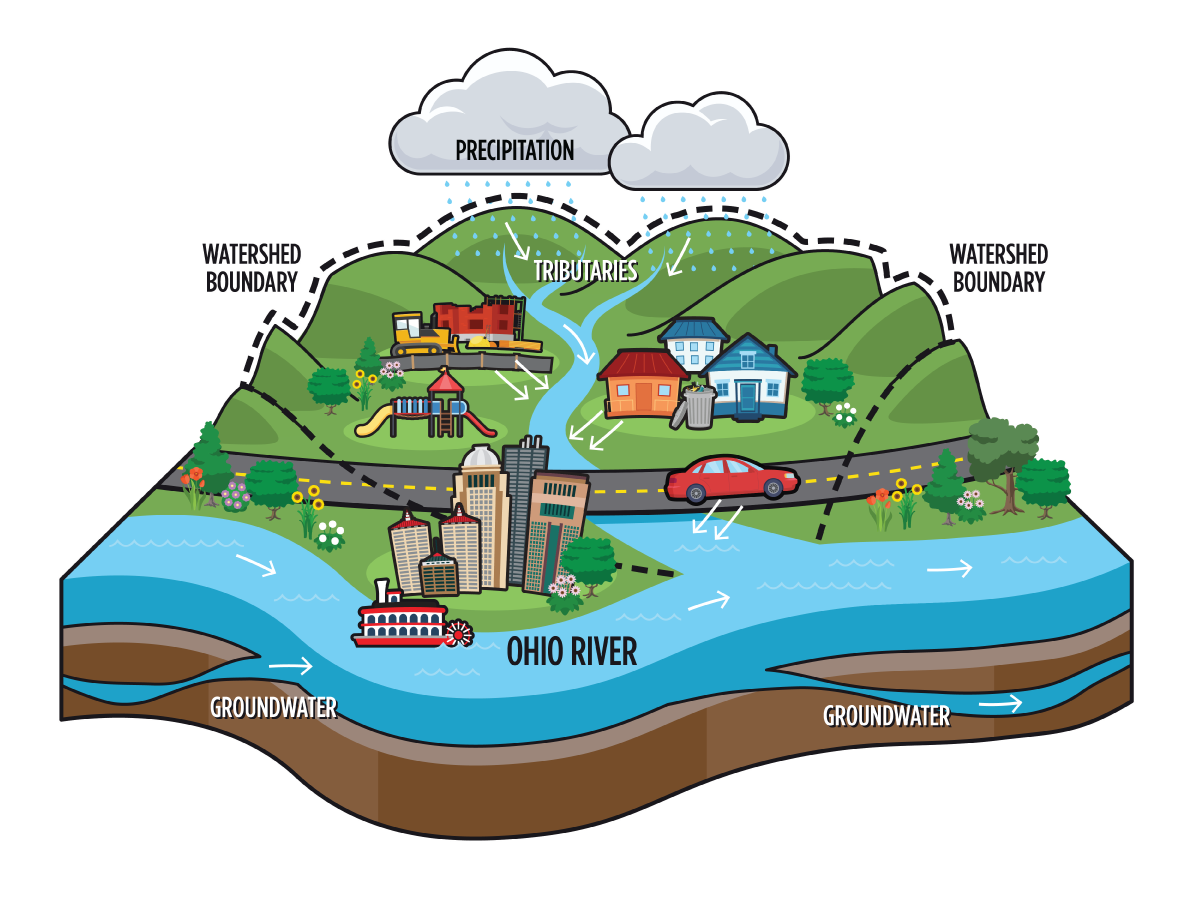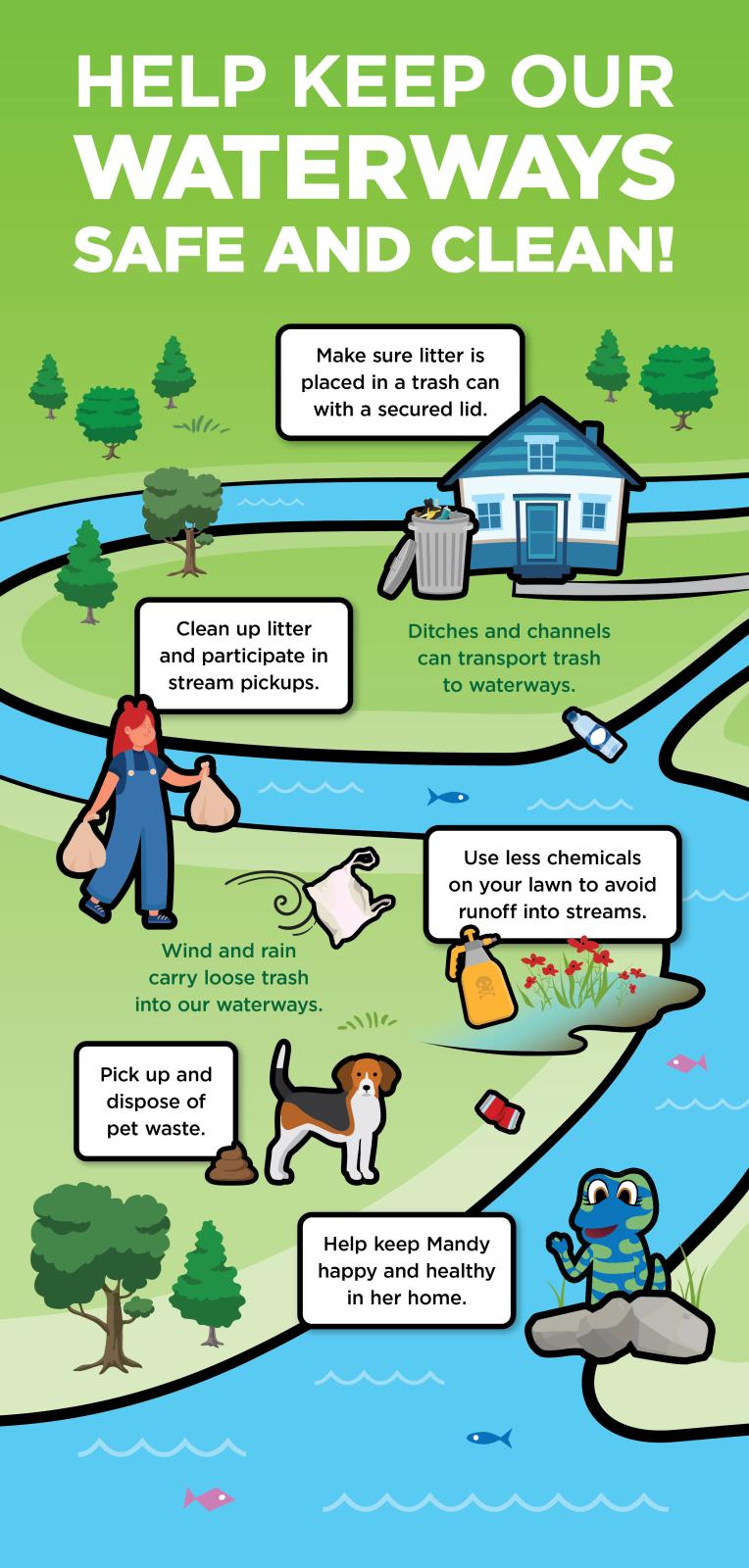This is our watershed moment.
MSD’s Healthy Watershed Initiative is a community-wide planning and implementation program to protect and restore our watersheds by reducing the pollutants within them. It’s part of MSD’s critical role of providing safe, clean waterways for Louisville Metro.

So, what is a watershed anyway?

The Environmental Protection Agency (EPA) defines a watershed as the land area that drains to a common waterway. Rivers, lakes, estuaries, wetlands, streams, and oceans are catch basins for the land adjacent to them. Ground water aquifers are replenished by water flowing through the land area above them.
We all live in a watershed. And in addition to the natural land, watersheds include surfaces like parking lots, rooftops, playgrounds, and other surfaces that water touches on its way to a river, stream, or other body of water.
From the rolling hills of Louisville’s beautiful parks to the paved streets of downtown, it’s all part of our watershed.
What’s watershed planning?
Watershed planning creates the opportunity to study the relevant characteristics of a watershed with the goal to create and implement plans, programs, and projects to sustain and enhance watershed functions that affect the plant, animal, and human communities within the watershed boundary.
Water supply, water quality, stormwater drainage, and the overall planning and utilization of watersheds are all features that communities seek to manage. Anyone that lives, works, or plays in the watersheds within our community plays an integral part in watershed management.
MSD has been selected as a beneficiary of Section 319(h) Grant Program Funding. By amendment to the federal Clean Water Act of 1987, the Section 319(h) Grant program was established to provide funding for efforts to reduce nonpoint source pollution.
Within this program, funds may be used to demonstrate innovating best management practices (BMPs), support education and outreach programs, develop Watershed Based Plans, and to implement Watershed Based Plans.

Nonpoint Source Pollution - What is it anyway?
Well, imagine you’re a raindrop.
You fall from the sky, land on the ground and begin your journey to a nearby stream. Along the way, you pick up garbage and other pollutants on the ground, ultimately depositing them into the stream.
This is what we call nonpoint source pollution, and here are some examples:
- Sediment from improperly managed construction sites, agricultural and forest lands – and eroding stream banks
- Fertilizers, herbicides and insecticides
- Oil and grease from automobiles and industrial applications
- Domestic and industrial chemicals like cleaning products
- Pet waste, which contributes to E. coli and nutrient pollution
How can you help protect our watersheds?
Protecting our watersheds – and the waterways they feed into – is a responsibility we all share. Here are some ways you can make a difference:
- Pick up after your pet
- Plant a rain garden to catch excess stormwater that flows across your lawn
- Properly dispose of automobile oils and fluids, cooking oils and grease by taking them to a disposal site
- Use lawn and garden fertilizers according to the label directions
- Utilize native plant species in your backyard and avoid invasive species - Refer to MSD's Plant Guide for more plant options
- Pick up trash
- Close the lid on trash and recycling bins




